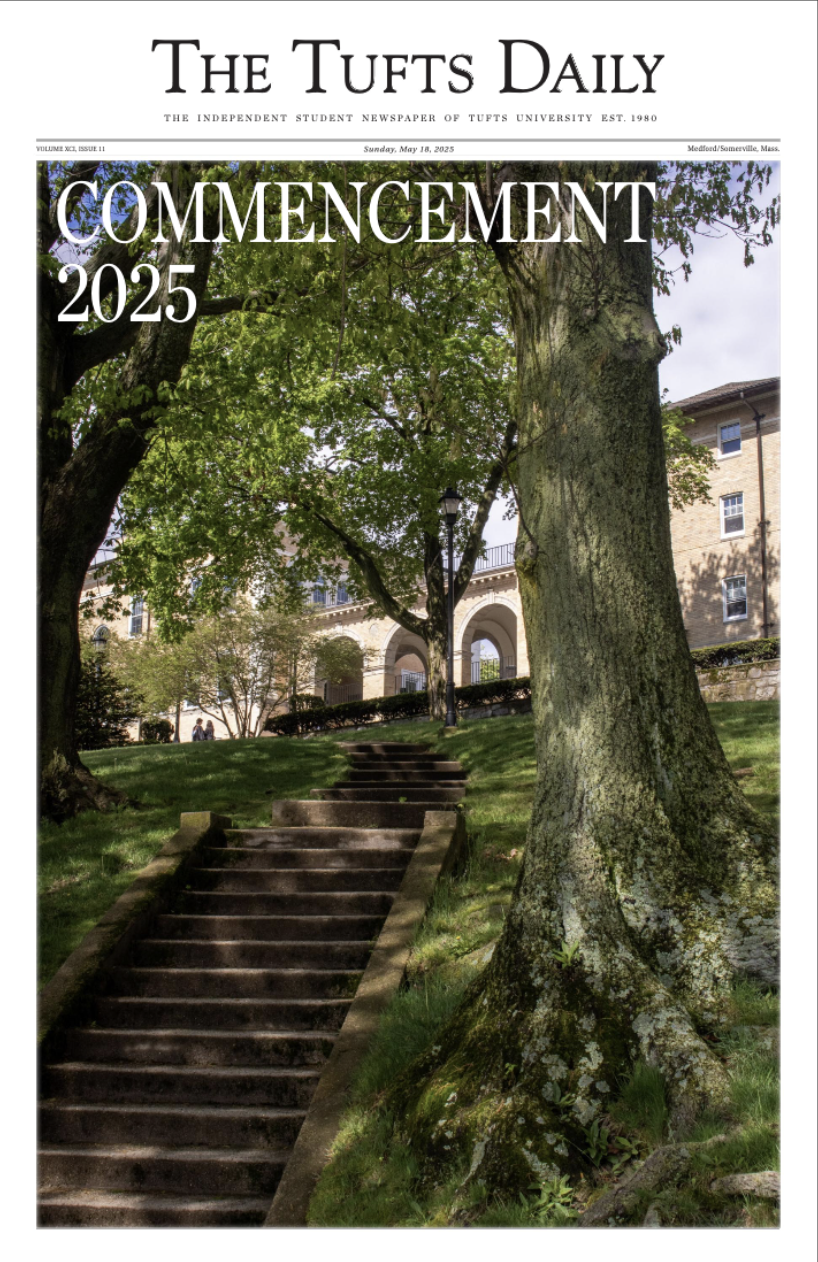Beginning in March, all Tufts students and faculty gained free access to every Harvard museum through a program offered by Harvard to local universities for an annual fee.
Though some Harvard museums, such as the Harvard Art Museums, are already free, Tufts community members now have access to four other museums: the Museum of Natural History, the Peabody Museum of Archaeology and Ethnology, the Museum of the Ancient Near East and the Collection of Historical Scientific Instruments.
The program was brought to Tufts’ attention by Noel Heim, lecturer in the Department of Earth and Climate Sciences, who wanted to take his 225-person “Dinosaurs!” course to the Harvard Natural History Museum in spring 2024.
“With such a big class, it is hard to provide specimens, and also specifically around dinosaurs,” Heim stated. “We don’t really have that here at Tufts.”
However, after reaching out to the museum about a discount for large groups, Heim still lacked the budget for the trip. Weeks later, the museum reached back out to Heim to tell him about a program they offer where the university pays an annual fee in exchange for free access for all students and faculty.
Heim then told the Office of the Vice Provost about the program.
“This came to us in the middle of February, and we are active in the system now, people can start going,” Christine Hollenhorst, senior program administrator in the Office of the Provost, said. “We felt like it was just a win-win.”
Hollenhorst spoke about how she hopes access to these museums will further expand educational opportunities for students, especially those in the sciences.
“We really liked [how] faculty could bring their students to the museum and have a little bit more of a hands-on experience, rather than just learning about something in a lecture or in a book,” Hollenhorst stated. “They have these great resources right there to make something come to life a little bit more.”
However, Hollenhorst also believes these museums have much to offer students outside of academic settings.
“We also really liked … the student life piece of it,” Hollenhorst commented. “It’s something that can help in course work but also just give you another resource of something fun and interesting to do in the area that's free and close by.”
Hollenhorst was specifically excited about the student-focused events hosted by the various Harvard museums, including a weekly Thursday evening event called “ArtsThursdays.”
As part of “ArtsThursdays,” the Harvard Museum of the Ancient Near East hosted “Ancient Game Night” on March 27, where there were ancient board games, craft making and beverages.
Heim also urged students to explore the museums, especially the Museum of Natural History, outside of the classroom.
“I do think it’s a great resource, and I hope a lot of students at Tufts go and check it out because it is a neat museum,” Heim said.
Besides the vertebrate fossils, minerals and rocks that he uses in his own teaching, Heim recommended that students see the Glass Flowers exhibit, which contains over 4,000 anatomically accurate glass plants.
“They’re really … amazing to see. So I hope everyone takes the opportunity at some point to go,” Heim said.
Heim is not the only professor excited to incorporate the museum into his courses. Professor Jill VanTongeren, chair of the Department of Earth and Climate Sciences, communicated her eagerness to include the museum in her curriculum, especially for lab work.
“Several [members] of our department teach classes where we use a lot of physical specimens, so fossils for sure with paleontology and dinosaurs, but also minerals and rocks,” VanTongeren said. “And the Natural History Museum has a world-class mineral collection that they have highlighted in there as well. And so my course on mineralogy and mineral resources will [definitely] visit as well.”
VanTongeren did lament that while Tufts does have an extensive collection of minerals and rocks, the only surviving part of the premier Barnum Museum of Natural History, which was destroyed in the Barnum fire of 1975, does not have the facilities to display or rebuild the collection.
While Tufts does not have nearly as a completed dinosaur fossil collection as the Harvard museums, the earth and climate sciences department is celebrating Tufts’ allowing free access to the museums. Vantongeren does wish there was a way to display the vast mineral and rock collection Tufts does have for all students to see.
“I have been trying to work with the deans and the provost to establish a science gallery on campus,” VanTongeren said. “A science gallery with some permanent collection of minerals and fossils to display, but also little pop-up science events where different faculty could highlight their research.”






